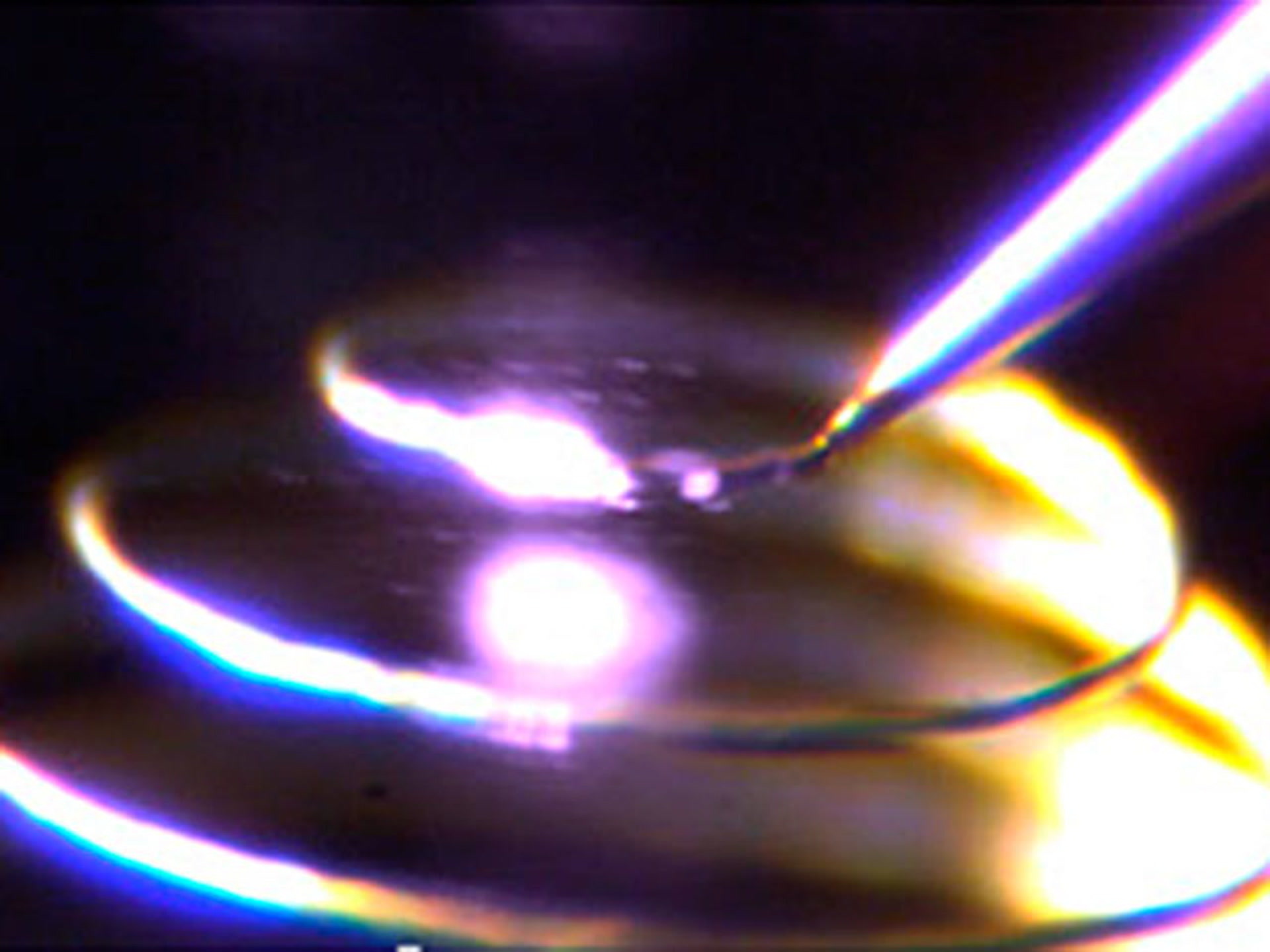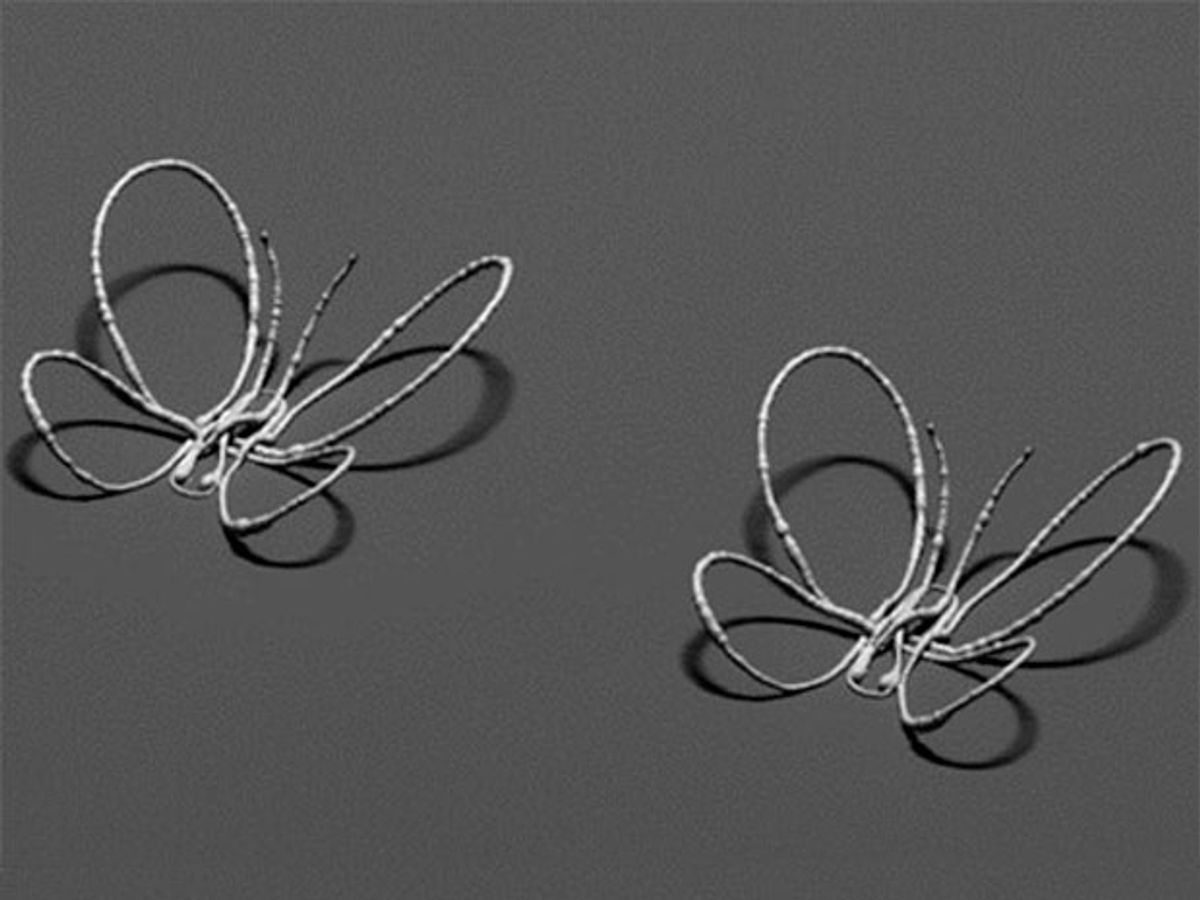While the growth of 3-D printing has led us to believe we can produce just about any structure with it, the truth is that it still falls somewhat short.
Researchers at Harvard University are looking to realize a more complete range of capabilities for 3-D printing in fabricating both planar and freestanding 3-D structures and do it relatively quickly and on low-cost plastic substrates.
In research published in the journal Proceedings of the National Academy of Sciences (PNAS), the researchers extruded a silver-nanoparticle ink and annealed it with a laser so quickly that the system let them easily “write” free-standing 3-D structures.
While this may sound humdrum, what really takes one’s breath away with this technique is that it can create 3-D structures seemingly suspended in air without any signs of support as though they were drawn there with a pen.
In the video below, you can see the “laser-assisted direct ink writing” technique used to print a spiral coil and a butterfly-shaped structure in seconds completely unsupported by any other structure.

The technique is able to accomplish this feat by combining patterning and annealing in a single step. As the PNAS paper explains:
“…the printed metallic features exhibit the requisite mechanical properties needed to precisely fabricate arbitrary objects in midair, enabling complex curvilinear structures to be generated with the need for support material.”
It is also this localized annealing that makes it possible to print on heat-sensitive, low-cost plastic substrates instead of relatively expensive conductive substrates.
In operation, an infrared laser is focused on a 100-micrometer spot next to the opening of a glass nozzle from which a concentrated silver nanoparticle ink comes out. Once the ink leaves the nozzle, the laser quickly heats the patterned material so that it forms into a mechanically strong conductive wire.
“Our previous work involved extruding a viscoelastic silver ink that had to be thermally annealed (in a furnace) to form a conductive metal,” Jennifer A. Lewis, led the research with Mark Skylar-Scott, explained in an e-mail interview with IEEE Spectrum. “This ink cannot be accurately patterned into complex shapes in midair during printing. So, to achieve this, we use a laser to anneal the silver as soon as it exits the nozzle thereby locking the patterned structure in place in 3-D. With this approach, we can create arbitrary conductive metal structures in mid-air without needing a post-heating step.”

The trick is to get the laser as close to the deposition nozzle as possible without heating the nanoparticles inside the nozzle.
This new 3-D printing technique could be used to produced metallic interconnects; springs and other freestanding spiral structures that could be used in microelectromechanical systems (MEMS); antennas that operate much more efficiently in 3-D form; and a host of electronic devices.
It is in this last application of 3-D printing of antennas that Lewis has already made quite a reputation for herself. Back in 2011, while at the University of Illinois, Lewis demonstrated for the first time 3-D printed antennas on curvilinear surfaces.
In that method, the silver nanoparticles were sprayed on either the inside or the outside of a small hemispherical dome. This latest research eliminates the need for the dome as a substrate, and because the wire is annealed “on the fly” the whole process takes mere seconds to complete.
Not only could this technique lead to better mobile phone reception, but could open up entirely new ways for fabricating customized electronics. However, Lewis cautions that for this technique to o be widely adopted it must be further engineered so it can be incorporated into an auto-aligning, production-grade 3-D printing system that can work with existing assembly line processes.
Lewis added:
“Our next step is to increase the range of materials that can be written with Laser-DIW. In particular, we are interested in ceramic and semiconductor materials which could enable the construction of novel device architectures for high-performance structures or electronics.”
Dexter Johnson is a contributing editor at IEEE Spectrum, with a focus on nanotechnology.



